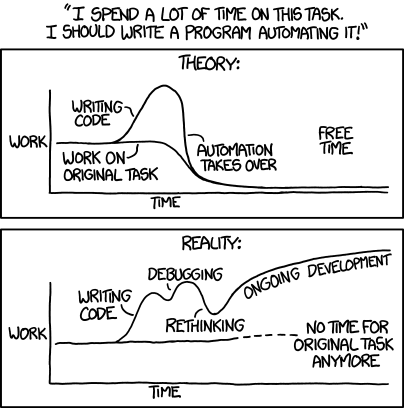Productivity FAQ
Productivity Frequently Asked Questions
The followinq questions are frequently asked about productivity and ways to improve productivity / increase productivity. If you have specific questions not covered by the following answers please contact us, we would be pleased to provide an answer as well as add it to this FAQ section. Ether Solutions believes that there are no “Daft” questions, so please ask.
In Ether Solutions mission to improve Productivity in the UK, we hope that this information is of service to anybody seeking knowledge on Business Productivity.
There is no order of importance to the list. The questions are numbered simply for easy reference.
1. What does productivity mean?
Productivity is the effectiveness of productive effort, as measured in terms of the rate of output per unit of input. Or put another way, how much effort and resources are required to create one unit of output. Although absolute values can be used to compare across organisations, many businesses are more concerned with the improvement or increased in productivity. This takes away the detailed calculations and focusses on more output from the same staff or the same amount of output from less staff.
2. What is marginal productivity?
Marginal Productivity is the difference in productivity when things change. The term Marginal Productivity is often associated with the “Law of Diminishing Marginal Productivity”. This considers the combination of variable inputs and fixed inputs. The theory is that increases in the variable inputs can improve marginal productivity but the rate of increase will start to diminish if the effectiveness is constrained by the fixed inputs. For example, increasing the number of car mechanics may increase the number of car repairs but if there is a limited amount of space available for the cars, the rate of increase will start to diminish until the “Fixed Input” of the space is incremented.
3. How to increase productivity?
How to increase productivity is a challenge for every manager and every business. Many theories have been developed about how to increase productivity by better engagement of the employees through motivation, aspiration, organisation, use of sound (e.g. Radio), lighting conditions, etc. Ether Solutions offers a practical way to increase productivity for staff working in offices where the tasks involve work on computer systems. By Automating the repetitive tasks that make up a typical business process through the deployment of software robots, the staff can focus on handling the exceptions, the unusual cases and adding more value to other parts of a business process.
In many situations, automation provides software robots that can work 24 x7 which is 4.2 times the number of hours an employee would deliver in a 40 hour week. This indicates how Ether Solutions are able to deliver productivity gains for businesses.
4. How to calculate productivity?
Calculate Productivity by taking the total output and total input. For most outputs there is a set of directly related inputs, but for a meaningful calculation there also needs to be an appropriate proportion of overhead costs allocated. This is not always easy to determine when the number of items being produced is variable.
For example, if there is an overhead charge of £100,000 and the number of items being varies between 400 and 600. Is all the overhead charge allocated to the first 400 items in the productivity calculation and the additional 200 delivered at an improved productivity level as there is no additional overhead charge?
In many instances, business managers focus on changes in productivity so a consistent “Budget” allocation overheads for each item in the input provides a workable calculation of productivity.
5. How to measure productivity?
The measure of productivity can be performed at various levels within an organisation. Usually the focus is on the activities of a team which provides a scope to determine the outputs delivered by the employees and the resources they use to perform the tasks that enable the production of the outputs. The measurement of productivity enables changes in ways of working to be compared so that increases in productivity can be recorded.
How productivity is measured will in many situations rely on assumptions and approximations. Exact values are often not that important as the focus is generally on changes in productivity which can be measured providing the basis for the assumptions remains consistent.
6. How is productivity calculated?
How productivity is calculated remains consistent across all businesses, it is the comparison of the amount of output produced and the amount of input resources required to achieve the outcome. The calculation can be made in pounds sterling (or other currencies) or can be units appropriate to a business.
For example, a team of accounts payable clerks might consider productivity in terms of the number of invoices entered into an accounting system (e.g. Xero, Sage, SAP, Oracle) with the number of man hours required to complete the task. The team might process 1,000 invoices a month and it might take a team of 4 clerks 4 days worth of effort. This could create a productivity calculation of 1000 / (4 x 4 x 8 hours ) = 7.8 invoices processed per man hour. This might be a really useful measure for finance directors as a way to measure productivity at a level that can be shared with finance team members and without the complexity of assessing overheads and other variables.
7. What are productivity tools?
Productivity Tools are things which enable a team to produce more output without a proportional growth in inputs.
The productivity tool that Ether Solutions uses to implement Automation for clients is called UiPath. This provides Software Robots to perform the repetitive tasks on computers which would otherwise require manual effort to perform the tasks. UiPath is a productivity tool that enhances productivity by having lower processing costs to operate software robots that manual processing costs.
8. How to improve productivity?
How to improve productivity is a continual challenge for business managers. There is lost of academic work available about detailed calculations of productivity but in most cases the focus is on improvements in productivity which only requires comparison calculations. This simplifies the complexity of productivity calculations. Much has been written by business experts on ways to improve employee activities after undertaking “Time” and “Motion” studies.
Ether Solutions delivers a means to improve productivity through the implementation of automation. Where there are repetitive tasks undertaken by staff working on computer systems, the use of Software Robots enables the tasks to be completed and staff are able to spend time on handling exceptions, the unusual cases and other higher value tasks. The improvement in productivity is measurable and there are many quality benefits achieved as well.
9. Why is productivity important?
Productivity is important as it measures the value that is being added by the people undertaking the activity. The more value being added, the larger the scope for increasing the pay of the employees. In a situation where the cost of doing the work is greater than the value added, the activity is a drain on the company’s resources.
Productivity can also be important where there is a fixed amount of work to be completed. The more productivity the activity, the quicker all of the work is completed and hence more time is available to do other things. Time is fixed for everyone, productivity is important as it determines how efficiently the time is used.
10. How to increase productivity in the workplace?
How to increase productivity is a challenge for every manager and every business. The range of options available to increase productivity will vary by the type of workplace. The situation for manufacturing assembly lines is different to logistic warehouse operations which are different from retail shops that vary from hotels, etc.
Many theories have been developed about how to increase productivity by better engagement of the employees through motivation, aspiration, organisation, use of sound (e.g. Radio), lighting conditions, etc.
Automation is a common approach in many workplaces. For example, robot arms on assembly lines and robots moving goods in warehouses.
In office environments, the use of IT systems delivered one level of automation but technology has progressed and an additional increase in productivity can now be achieved in the office workplace. In many situations there are teams of people executing business processes using the IT systems.
Ether Solutions offers a practical way to increase productivity for staff working in offices where the tasks involve work on computer systems. By Automating the repetitive tasks that make up a typical business process through the deployment of software robots, the staff can focus on handling the exceptions, the unusual cases and adding more value to other parts of a business process.
11. How to measure productivity of employees?
To measure productivity of employees the outputs generated from the activities undertaken need to be examined. One approach is place a financial value on the outputs produced and examine the cost of the inputs required to perform the processing. This should include the direct costs such as staff payments but also factor in the appropriate proportion of overhead costs. This can be become a very detailed set of calculations and a set of assumptions.
Many business want to monitor changes in productivity rather than absolute values. To meet this requirement, the measurements can be significantly simplified and often reduce to the number of outputs completed and the number of worker hours used to create the result. For regular activity, this can help business track the changes in productivity that occur.
12. What is labour productivity?
Labor productivity is also know as workforce productivity and in the UK spelt as “Labour”. It measures the amount of output produced for each hour of manual work. It is a common measure used by economists to track changes.
For workers in offices, one way that labor productivity can be increased is to use digital workers. A digital worker, also known as a “Bot” or software robot, is able to interact with computer systems in the same way that a person interacts.
The digital worker can read information displayed on a screen, type using the keyboard and perform mouse movement and clicks. It can do the same things a person would do at a computer, this means that it can be configured to perform repetitive tasks normally undertaken by a person.
Some of the advantages of using a digital worker is that it can be up to 10 times faster than a person and does not make human errors which at a typical level for repetitive work is 4%.
13. What is productivity software?
Productivity software can be defined as any software that enhances productivity. There are different types of software that address productivity from a number of different perspectives. One type is software that helps a person organise and track their tasks. Often called personal productivity software.
Another type is Robotic Process Automation (RPA) software that automates activity that a person would otherwise need to perform on computer systems. Ether Solutions specialises in implementing this software which is non -invasive and works with existing software applications, websites, email, etc.
14. How can productivity be increased?
How to increase productivity is a challenge for every business. Many theories have been developed about how to increase productivity by better engagement of the employees through motivation, aspiration, organisation, use of sound (e.g. Radio), lighting conditions, etc. In some environments, better machines can be used, for example a person can use an excavator rather than manually digging in the ground.
Ether Solutions offers a practical way to increase productivity for staff working in offices where the tasks involve work on computer systems. By Automating the repetitive tasks that make up a typical business process through the deployment of software robots, the staff can focus on handling the exceptions, the unusual cases and adding more value to other parts of a business process.
15. How to define productivity?
Definitions of productivity vary in complexity but are always expressed as the amount of output in relation to the amount of input resources required to create the output.
Detailed calculations are possible when looking at the scope of work undertaken by teams of people within an organisation. The most complex aspect will be assessing the appropriate proportion of overheads to apply in the calculation. A set of working assumptions are normally developed to support the basis of the calculation.
In many business situations the definition of productivity does not need to be absolute as the main use is to track changes in productivity. In such situations, the calculation simplifies to the amount of output produced for the variable amount of input. For example, the number of widgets produced for the number of worker hours spent on the activity.
As any team of workers will be involved with holiday, sickness, training and other tasks that do not directly contribute to production of the output, applying a definition to productivity to measure change is often an effective practical solution.
16. What tips for productivity?
The tips for productivity are generally focussed on personal productivity but they can be applied to business teams as well. The lists of productivity tips generally include:
- Planning / organising tasks
- Handle things once and being willing to delegate
- Keep to a schedule, including having breaks
- Use task priority to determine order of activity
- Keep focus and avoid distractions.
17. Are there good books on productivity?
There are many books written about productivity, Amazon lists over 100. Many of the books focus on personal productivity covering things such as habits, handling stress and determingin priority. There are many academic books hat address productivity which are frequently listed in MBA courses.
18. How to plan for productivity?
In the logistics sector in particular there are many jobs for planners who have productivity as a key part of the job description. By careful planning, the productivity of transport pick-ups and deliveries can have significant impact on profitability. The capacity of the transport, journey times, etc. all get used by planners but as events occur productivity an be devastated unless planners can rapidly adjust operational activity to gain the opportunities which arise and minimise the difficult challenges.
19. What is toxic productivity?
Toxic productivity is when the constant need to “do” negatively impacts your physical, mental, and emotional health. It’s the dark side of the mindset to always be doing something, and it can lead to stress, anxiety, depression, and even burnout.
20. How is productivity celebrated?
Celebration of productivity occurs on World Productivity Day which is 20th June. There is also a National Productivity Day held in India on 20th February.
21. What are synonyms for productivity?
Synonyms for productivity vary in different business environments but typically include:
- Productiveness
- Productive Capacity
- Yield
- Efficiency
- Work rate
22. What is the formula for productivity?
The formula for productivity is essentially the amount of output in comparison with the amount of input. There are various ways the formula for productivity is expressed. One of the most common is the number of “Widgets” produced for each worker hour input to the process.
23. What is total factor productivity (TFP)?
In the USA, the Office of Productivity and Technology (OPT) measures how efficiently the economy converts inputs into the outputs of goods and services. Measures of labor productivity compare the growth in output to the growth in hours worked and measures of total factor productivity (TFP), also known as multifactor productivity (MFP), compare growth in output to the growth in a combination of inputs that include labor, capital, energy, materials, and purchased services.
24. What are the 4 types of productivity measures?
The 4 types of productivity measures used to assess a business teams performance are:
- Capital Productivity
- Material productivity
- Labor Productivity
- Total Factor Productivity
Each factor is part of the potentially complex process of getting from input to output in the scope of the team.
25. How do you use productivity measures in the workplace?
There are a number of ways to use productivity measures in the workplace such as “Time Tracking” to measure human effort input and “Output Counting” to record the amount produced, are the simplest to use. On a comparison basis to measure change in productivity they deliver the required level of accuracy.
26. How does quality impact productivity?
Quality has a direct impact on productivity as the calculation must be for “Fit for purpose” output. If the output being created results in “Widgets” that are not able to be sold, or have a high number of returns for refunds or repairs, then the additional effort required to rectify the issues needs to be incorporated into the productivity calculation. Changes that improve quality of the result will also increase productivity by reducing the negative impact of faults.
27. Is there an academic lead for productivity?
The academic lead for productivity in the UK is The Productivity Institute – www.productivity.ac.uk
26. How to do a Business Productivity Review?
To do a Business Productivity Review a scope for the activity needs to be defined so the boundary for inputs and outputs can be captured. By defining the purpose of the Business Productivity Review the complexity of the calculations and the assumptions to use can be determined. These will vary on whether the Review will be used as a basis for measuring internal changes to business processes within the organisation or whether the data is to be used for an external benchmark with other similar businesses.
27. What happens when you cannot automate to improve Productivity?
When you cannot automate to improve productivity then change has to be achieved by using measures and techniques to improve the performance of the individuals undertaking the activities. There are many different aspects covered by academic research about how this can be achieved. Some factors are environmental (working conditions – such as noise, light, sound, etc), some are skills (such as training, knowledge) and some are emotional (such as motivation, wellness, etc).
28. What is Hawthorne Effect on Productivity?
The Hawthorne Effect on Productivity came from studies undertaken by Elton Mayo, who observed a temporary dramatic increase in employee productivity when they were being observed as attention was focussed on them by managers / observers. It reflects the human nature to respond positively when others show an interest and concern for individuals. The temporary gain is lost once the level of interest / concern is perceived as standard.
29. What is the Solow Computer Paradox?
Identification of the Solow computer paradox, also known as the productivity paradox, is the observation that increased investment in IT doesn’t always lead to increased worker productivity. The term was coined by Erik Brynjolfsson in 1993, inspired by a quote from Nobel laureate Robert Solow.
30. What is the Pomodoro Technique?
The Pomodoro Technique is a time management method where you work on a task for 25 minutes, followed by a 5-minute break, and repeat this cycle, taking a longer break after every four “pomodoros” (work sessions), with the word “pomodoro” meaning “tomato” in Italian, referencing the timer used to originally practice this method; essentially, it encourages focused work intervals with scheduled breaks to maintain productivity.
31. What is the Eisenhower Matrix?
An Eisenhower Matrix is a productivity, prioritization, and time-management framework designed to help you prioritize a list of tasks or agenda items by first categorizing those items according to their urgency and importance. “I have two kinds of problems, the urgent and the important. The urgent are not important, and the important are never urgent.” .
32. What is Jodoka?
Jidoka is a Toyota concept aimed at describing the man-machine interface such that people remain free to exercise judgment while machines serve their purpose. The jidoka system shows faith in the worker as a thinker and allows all workers the right to stop the line on which they are working. Jidoka is often referred to as ‘automation with a human mind’. The jidoka way of working consists of three principles namely (i) not to make defects, (ii) not to pass on defects, and (iii) not to accept defects..
33. What is Heijunka?
Heijunka focuses on achieving consistent levels of production. Defined as ‘distributing the production of different [body types] evenly over the course of a day’. It incorporates the principles of line balancing by attempting to equate workloads, leveling demand out by creating an inventory buffer and replenishing that buffer. Aimed at providing even work load for all the workforce. Heijunka has the capability of reducing lead times by minimizing time losses due to frequent process changeovers..
34. What is Kaizen?
Kaizen (Continuous improvement) is a management supported employee driven process where, employees make a great number of continuous improvement efforts.
35. What is Poka-Yoke?
Poka-Yoke – It is controlling and comprehensive method of error proofing. It is a work process to eliminate inadvertent errors to ensure quality products and services. It helps in defect prevention and defect detection.
36. Who is responsible for Productivity?
“The productivity of work is not the responsibility of the worker but of the Manager.” according to Peter Drucker (The Father of Management).
“Productivity Is About Your Systems, Not Your People” according to Daniel Markovitz.
The reality is that Business Productivity is the responsibility of the Board.
37. What is the Cobb-Douglas Function for Productivity?
The mathematical equation for Cobb-Douglas function is as follows:
Q = A x Kα x Lβ
Where Q is the total product, K represents the units of capital, L stands for units of labor, A is the total factor productivity, and α and β are the output elasticities of capital and labor respectively. The Cobb-Douglas production function is the most widely used production function because it allows different combination of labor and capital. Other versions of the production functions such as the linear production function and fixed-proportion (Leontief) production function represent extreme case-scenarios i.e. perfect substitution between labor and capital and zero substitution respectively.
The Cobb-Douglas production function was developed by Paul Douglas, an economist, and Charles Cobb, a mathematician.
General note
One practical way to increase productivity is to automate repetitive tasks. For the execution of business processes using computer systems, Ether Solutions use UiPath for RPA solutions as it is rated by all the industry analysts as some of the best functionality available.















